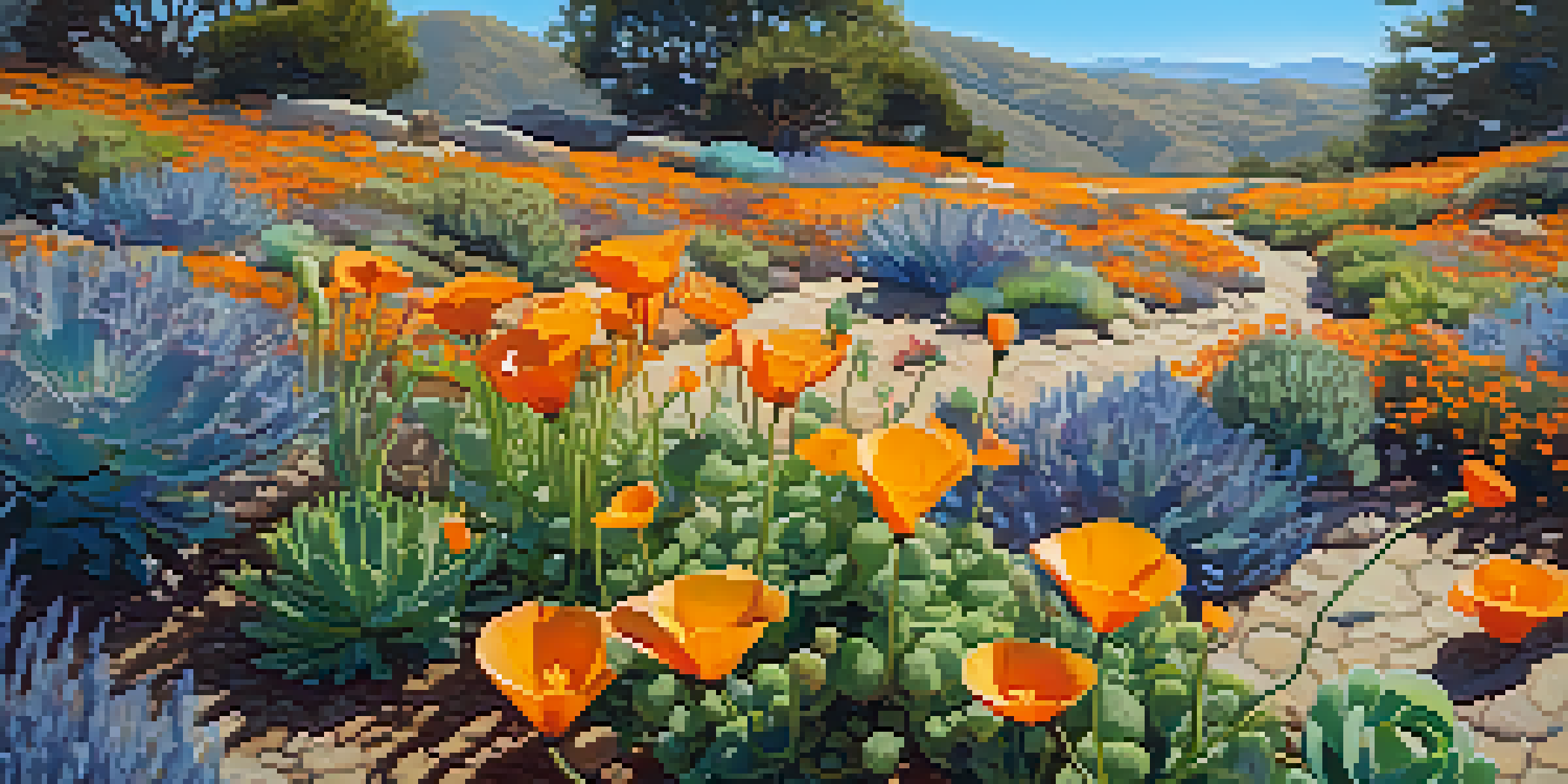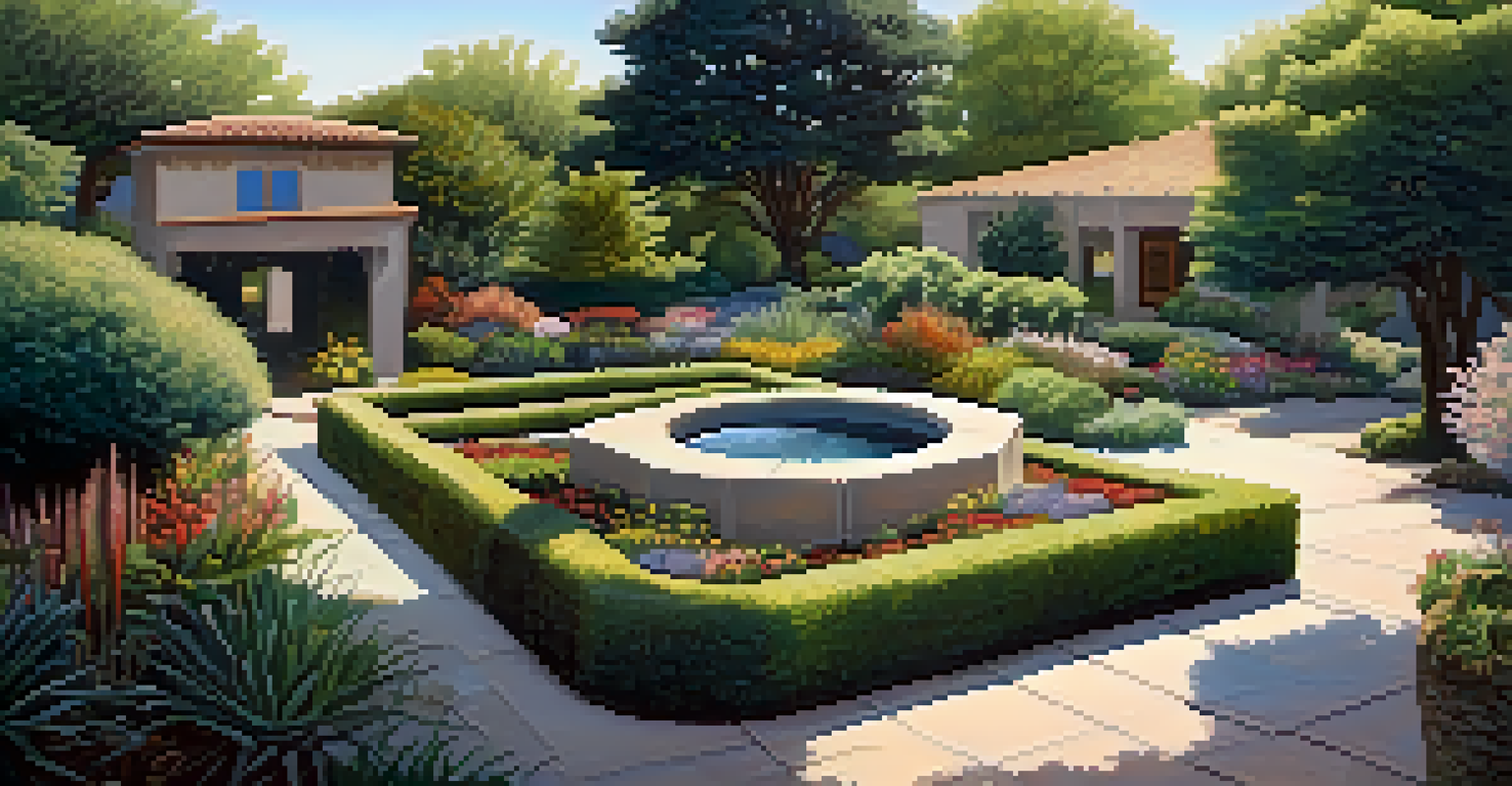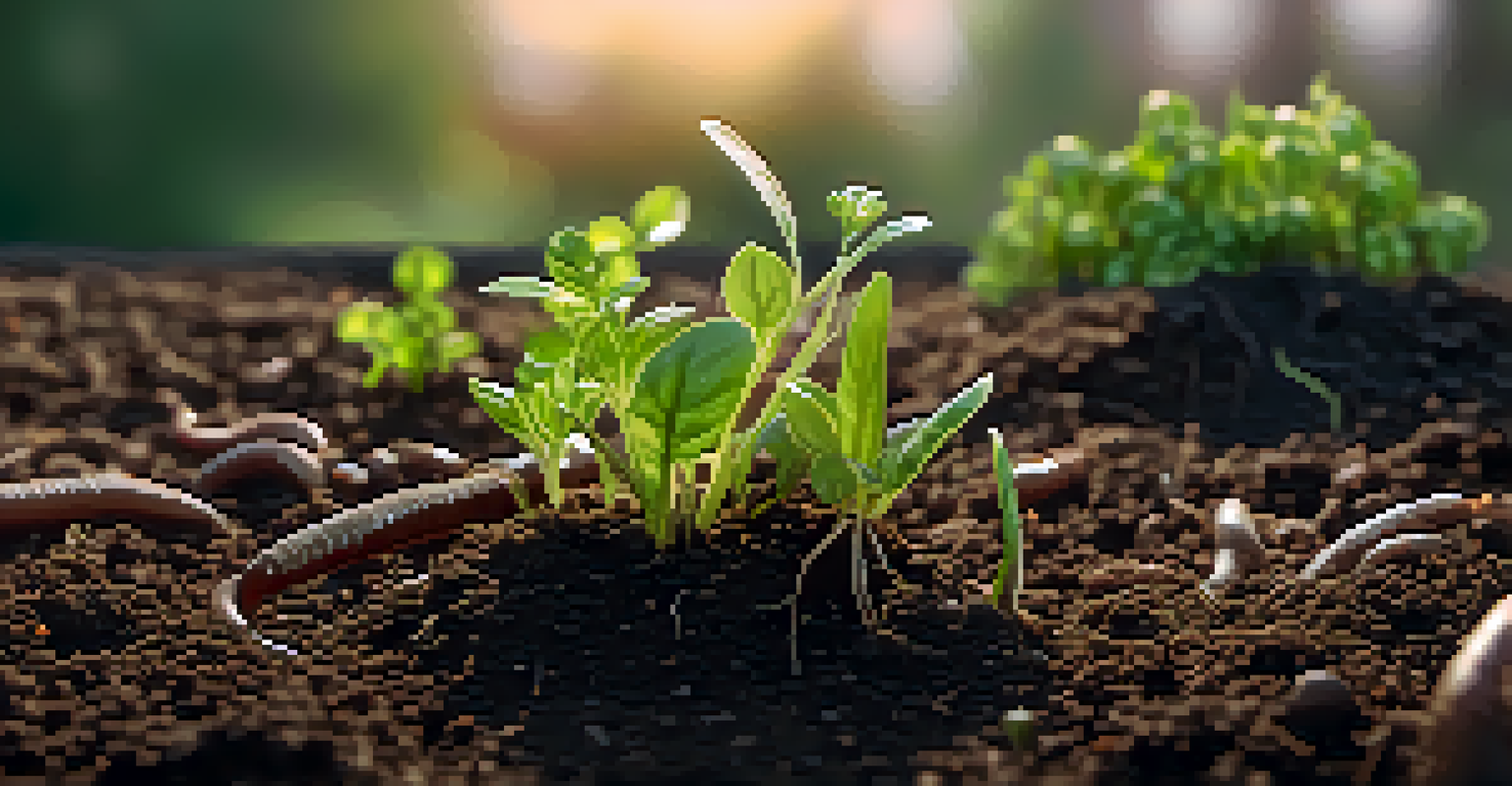How to Create a Drought-Resistant Garden in Carlsbad

Understanding Drought Resistance: What It Means for Your Garden
Creating a drought-resistant garden starts with understanding what drought resistance truly means. It’s not just about choosing plants that can survive with less water; it’s also about creating an ecosystem that supports them. In Carlsbad, where dry spells can be common, this approach is crucial for sustainable gardening.
The best time to plant a tree was twenty years ago. The second best time is now.
Drought-resistant gardening involves selecting plants that are native to your area or well-adapted to the local climate. These plants typically require less water, making them ideal for arid conditions. Think of it like choosing shoes for a long hike; the right pair will make the journey smoother and more enjoyable.
Moreover, creating a drought-resistant garden isn't just beneficial for the plants; it also conserves water, reduces maintenance, and can lead to lower utility bills. It's a win-win situation, allowing you to enjoy a beautiful garden while being environmentally conscious.
Choosing the Right Plants for Your Carlsbad Garden
When selecting plants for your garden, consider native species that thrive in the local climate. Plants like California poppies, succulents, and lavender are not only beautiful but also drought-tolerant. They are accustomed to the dry conditions and require less watering than traditional garden plants.

You can also look for plants that have deep root systems; these plants can access moisture that is deeper in the soil. For instance, agave and certain types of grasses can flourish even when surface water is scarce. By planting a mix of these selections, you can create a diverse and resilient garden.
Choose Native Plants for Success
Selecting drought-tolerant, native plants ensures they thrive in local conditions while conserving water.
Don't forget about incorporating ground covers like creeping thyme or sedum, which can help retain moisture in the soil while providing a lush green carpet. The right combination of plants will create a vibrant garden that thrives even during dry spells.
Soil Preparation: The Foundation of a Drought-Resistant Garden
Healthy soil is vital for any garden, especially when aiming for drought resistance. Start by improving your soil with organic matter such as compost, which helps retain moisture and provides essential nutrients. Think of compost as a sponge; it holds water for your plants to use when they need it.
In every walk with nature, one receives far more than he seeks.
Additionally, consider testing your soil to understand its composition. This will help you determine if you need to amend it for better drainage or nutrient availability. By knowing your soil's strengths and weaknesses, you can create a more conducive environment for your drought-resistant plants.
Lastly, mulching is a key step in soil preparation. A layer of mulch not only suppresses weeds but also helps retain soil moisture and regulates temperature. This simple strategy can significantly reduce the amount of water your garden needs, contributing to its overall resilience.
Watering Wisely: Techniques for Efficient Water Use
While drought-resistant plants require less water, establishing them initially can still require some irrigation. Focus on deep watering, which encourages roots to grow deep into the soil, enabling plants to find moisture more effectively. This is like teaching a child to swim; the deeper they go, the more confident they become.
Using drip irrigation systems can also be a game-changer for water efficiency. These systems deliver water directly to the plant roots, minimizing evaporation and runoff. This targeted approach ensures your plants receive the moisture they need without wasting water.
Optimize Soil for Retention
Improving soil health with organic matter and mulching helps retain moisture, essential for drought-resistant gardening.
Lastly, consider watering during the cooler parts of the day, such as early morning or late afternoon. This helps reduce evaporation and allows your plants to absorb more water. By being strategic about your watering schedule, you can help your garden thrive even in dry conditions.
Creating Microclimates: Enhancing Your Garden’s Environment
Microclimates are small areas within your garden that have slightly different climate conditions. By strategically placing trees, shrubs, or even garden structures, you can create shaded areas that help retain moisture. It’s like creating cozy nooks in your home; they provide comfort and warmth in a larger space.
For example, planting taller plants on the west side of your garden can provide shade for shorter plants in the afternoon sun. This not only protects them from excessive heat but also reduces water loss through evaporation. Understanding how sunlight and shade interact in your garden can make a significant difference.
Additionally, incorporating features like rock formations or water elements can also help regulate temperature and moisture levels. By observing and manipulating these microclimates, you can cultivate a thriving ecosystem that supports diverse plant life even in challenging conditions.
Maintaining Your Drought-Resistant Garden Year-Round
Maintaining a drought-resistant garden doesn't mean it’s maintenance-free; rather, it requires smart practices to keep it thriving. Regularly check for weeds, as they compete for moisture and nutrients. Think of weeds as uninvited guests at a party; the longer they stay, the more they disrupt the harmony.
You should also monitor your plants for pests and diseases, as healthy plants are more resilient. Establishing a routine for inspection can help you catch any issues early. A proactive approach ensures your garden remains vibrant and flourishing through every season.
Efficient Watering Techniques Matter
Implementing deep watering and drip irrigation maximizes water efficiency, crucial for establishing drought-resistant gardens.
Finally, consider seasonal adjustments based on the weather. During particularly dry spells, you may need to give your garden a little extra care, while during wetter months, you might focus on drainage. By staying engaged with your garden’s needs, you’ll foster a robust and resilient environment.
Benefits of a Drought-Resistant Garden: More Than Just Aesthetic
Creating a drought-resistant garden offers numerous benefits beyond its beautiful appearance. By conserving water, you’re contributing to environmental sustainability, which is increasingly important in today’s climate. It’s like being part of a larger movement, where your individual actions contribute to a healthier planet.
Additionally, these gardens typically require less maintenance and fewer resources. With reduced watering, you can save on utility bills and spend less time on garden upkeep. This frees you up to enjoy your outdoor space rather than constantly working on it.

Finally, a drought-resistant garden can increase your property’s value. Many buyers today appreciate homes with sustainable landscaping that require less water. By investing in a drought-resistant garden, you’re not just beautifying your home; you’re also making a wise financial decision.